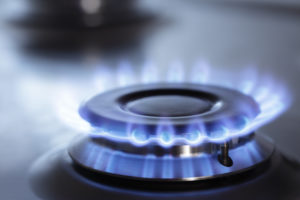 Natural gas futures fell below $4 for the first time in more than a month, as weather forecasts called for a period of warmer weather conditions. Meanwhile, yesterday the energy source registered the largest daily decline since May, following EIAs bearish report.
Natural gas futures fell below $4 for the first time in more than a month, as weather forecasts called for a period of warmer weather conditions. Meanwhile, yesterday the energy source registered the largest daily decline since May, following EIAs bearish report.
On the New York Mercantile Exchange, natural gas for delivery in February declined by 0.36% to trade at $3.991 per million British thermal units by 12:43 GMT. Prices hit a session high at $4.036 per mBtu, while day’s low was touched at $3.986 per mBtu, the weakest level since December 5th. Yesterday, natural gas futures declined 4.44%, the largest daily drop since May 2nd. The energy source declined 0.4% in the last 5-day period, after losing 1.9% in the previous week. However, prices settled last year 26% higher, the best performance since 2005 and second straight annual advance.
Continuing mild short-term weather forecasts
NatGasWeather.com reported on January 10th that a fairly strong rainstorm will develop today and tonight and will sweep across all of the eastern US by Saturday, bringing a wide area of precipitation. Ahead of the rain storm, due to southerly wind, temperatures will be very mild, with highs reaching 50s and 60s in the Northeast and Mid-Atlantic and 70s in the Southeast.
Early next week a reinforcing shot of cold air will blast through the Midwest and into the Northeast. Several strong cold fronts will push through January 16-22nd, bringing a return to above normal natural gas and energy demand.
NatGasWeather.com’s extended forecasts for the week ended January 23rd, show the period of milder weather conditions will come to an end around the January 14th as several cold blasts sweep across the Midwest and into eastern US. The first two cold outbreaks won’t be as impressive as the recent two that impacted the US, but according to the website the third one could be extremely cold. The outbreak may bring another round of below zero temperatures to much of the Midwest and Northeast, with hard freezes again deep into the Southeast. Fairly strong winter storms could develop over the south-central US and could then track through the Mid-Atlantic and Northeast. A very impressive cold outbreak over much of the eastern and central US around January 18-19th may bring a huge surge to natural gas and energy demand.
EIAs weekly US gas inventories report
The Energy Information Administration reported on Thursday that US gas supplies fell by 157 billion cubic feet in the week ended January 3rd, higher than expectations for a decline of 149 bcf. This was above the five-year average drop of 131 billion cubic feet, but less than last years 191 bcf withdrawal during the comparable period. However, the decline was insufficient, especially considering the recent record low temperatures.
Total gas held in underground storage hubs equaled 2.817 trillion cubic feet as of January 3rd, 15.8% below last year’s 3.345 trillion stored. The deficit to the five-year average to a record 10.1% from the preceding week’s 8.9%.
Inventories in the East Region fell by 98 bcf to 1.403 trillion and were 14.6% below the five-year average of 1.642 trillion cubic feet. The West Region received a net draw of 17 bcf to 395 bcf, 8.1% below the average. Stockpiles in the Producing Region slid by 42 billion cubic feet and reached 1.019 trillion, 3.8% beneath the five-year average of 1.059 trillion cubic feet.





